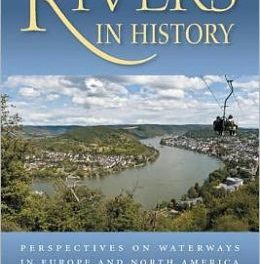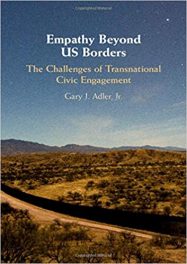 Editor: Professor Philippe Beaujard
Editor: Professor Philippe Beaujard
Translation edited by Tamara Loring, Frances Meadows, and Andromeda Tait
Publisher: Cambridge University Press – 1,700 pages total
Book Review by: Nano Khilnani
“Asia and Africa dominated the cultural and economic landscape and the flow of ideas in the pre-modern world.”
This is what the editor of this superbly-researched and well-organized written history – Professor Philippine Beaujard, a researcher and historian at the Paris-based Centre National de la Recherche Scientifique, asserts at the beginning of his book. (The italicized words quoted here are ours).
First, we lay out the outline of the contents of this work. Then, we pick out some essential findings and differences we find in this book from other traditionally Eurocentric world histories on the Common Era (CE) and Before the Common Era (BCE). Finally, we discuss those differences and their implications on mankind’s view of its past.
Volume 1: From the Fourth Millennium BCE to the Sixth Century CE – 845 pages
Volume 2: From the Seventh Century to the Fifteenth Century CE – 855 pages
Volume 1
Prologue
Introduction: The Geography of the Indian Ocean and Its Navigation
Part I : The Ancient Routes of Trade and Cultural Exchanges and the First States: Sixth-Second Millennium BCE
Introduction: The Geography of the Indian Ocean and Its Navigation
The Indian Ocean
Wind Patterns
The Currents
Madagascar
Navigation of the Indian Ocean
- The Birth of the State
- Early Bronze Age 1 in Western Asia and Egypt (c. 3000 – 2700 BCE)
- Early Bronze Age II (c. 2700 to 1950 BCE)
- The New Spheres of the Middle Bronze Age in Asia and Egypt (c.2000 – 1750 BCE)
- The Late Bronze Age (c.1600 – 1100 BCE), an Area Unified around the Eastern Mediterranean
- East Asia: From Villages to states (c.5000 -1027 BCE)
- The Emergence of Intermediary Spaces
Conclusion: Were there World Systems During the Bronze Age?
Part II: Birth of the Afro-Asian World-System:(First Millennium BCE– 6th Century CE
Introduction
- The Beginning of the iron Age
- The Road to the Orient
- India: The Birth of a New Core
- South Asia, An Interface Between Two Oceans
- China: From Kingdoms to Unification
- Arabia: Maritime Cultures and the Rise of the Caravan Trade
- Africa: The Emergence of a Pre-Swahili Culture on the Azanian Coast
- The Austronesian Expansion and the First Malagasy Cultures
Before the Preface, see Maps and Charts (in color plates) on pages 40 and 41; Illustrations (in color plates) on pages 72 and 73; Figures on various pages from page 17 to 594; Tables on various pages from page 41 to 613; and a page containing Abbreviations.
Bibliography
Index of Geographical Names
Name Index
Subject Index
Volume 2: From the Seventh Century to the Fifteenth Century CE
- Part I: The Indian Ocean Between Tang China and the Muslim Empire (Seventh-Tenth Century)
Introduction
- Tang China and the Rise of the silk Roads
- Islam: The Conquest of Lands and oceans
- India: A Core with Four Centers
- Southeast Asia: The Rise of the Sriwijayan Thalassocracy and the Javanese Kingdoms
- East Africa: Dawn of the Swahili Culture
- Madagascar (Seventh-Eleventh Century): Early Cultural Hybridization
- Part II: Globalization during the Song and Mongol Periods (Tenth-Fourteenth Century), and Downturn of the Fourteenth Century
Introduction
- China: The Golden Age of the Song, the Mongol Conquest, and the Ming Revival
- India: From the Chola Empire to the Delhi Sultanate
- Southeast Asia: From the decline of Sriwijaya to the Rise of Mojopahit
- Central and Western Asia: From the Seljuk Empire to the Ilkhanids
- Egypt and Yemen: The Jewish and Karimi Networks
- East Africa: The Rise of the Swahili Culture and the Expansion of Islam
- Madagascar: The Development of Trading Ports and the Interior
- Part III: From the Globalization of the Afro-Eurasian Area to the Dawn of the European Expansion (Fifteenth and Early Sixteenth Centuries)
- Ming China: From Expansion to Withdrawal into Threatened Territory
- India: The Flowering of the Sultanates and the Expansion of Vijayanagara
- Southeast Asia: Era of the Merchant Sultanates
- Western Asia: Revival of the Persian Gulf
- Egypt and Yemen: Advances in State Trade and the End of the Karimi
- East Africa and the Comoros
- Madagascar (Fifteenth-Sixteenth Century): The Rise of Trading Ports and Development of the Highlands
- The Portuguese in the Indian Ocean
Epilogue
Bibliography
Index of Geographical Names
Name Index
Subject Index
Color plates can be seen at the following locations: Maps and Charts on pages 110 and 111; Illustrations on pages 302 and 303: Figures on various pages from page 78 to 647; Tables on various pages from page 16 to page 646; and a page containing Abbreviations.
In this two-volume history, Professor Beeaujard has basically “reassessed” Europe’s ‘place in world history.’ Among assertions he makes at the beginning of the first volume are the following. We quote someone quoting him below, so it is clear these are his words, not ours:
- “Europe’s place in history is reassessed in this first comprehensive history of the ancient world, centering on the Indian Ocean and its role in pre-modern globalization.”
- “Philippe Beaujard presets an ambitious and comprehensive global history of the Indian Ocean world, from the earliest state formations to 1500 CE.
- “Supported by a wealth of empirical data, full-color maps, plates, and figures, he shows how Asia and Africa dominated the economic and cultural and the flow of ideas in the pre-modern world.”
- “Beaujard questions the origin of capitalism and hints at how the world-system may evolve in the future.”
- The result is a re-orienting of world history, taking the Indian Ocean, rather than Europe, as the point of departure.”
I believe these initial assertions about the pre-eminence of Asia and Africa in world history, as well ‘how the world-system may evolve in the future’ have already been demonstrated in the world arena as it relates to one global problem: fighting the Coronavirus or Covid-19 virus pandemic has been fought in Asian and (and to some extent, African) countries in better and more effective ways than in European nations.
Without going into a whole lot of details, this news item demonstrates and supports the view that Asia is rising in economic growth and is going to be the world’s fastest by this measure. See how Asia is fighting the global Covid-19 pandemic, versus the West: https://qz.com/africa/1919785/what-africa-and-asia-teach-rich-countries-on-handling-a-pandemic/
Editor: Professor Philippe Beaujard is an Emeritus Director of Research at the Centre National de la recherché Scientifique, Institut d






